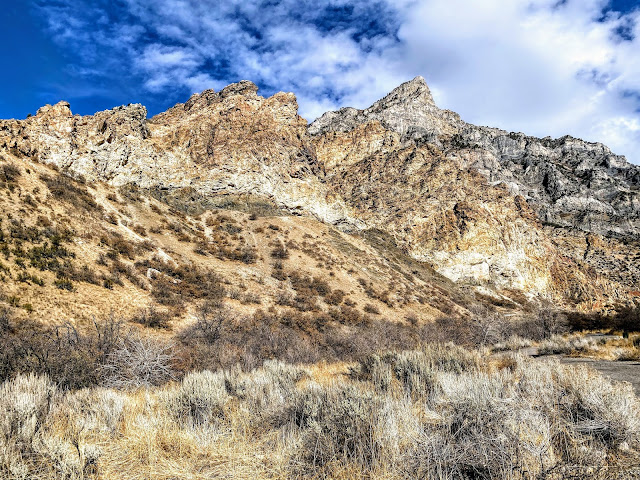We had an absolutely perfect day for hiking into the snow-covered Wasatch Mountains. The snow wasn't quite deep enough for me to use my snowshoes but my daughter and son-in-law used theirs. We only hiked a couple of miles but the views were spectacular. The snow was a light powder that covered solid ice. It was warm enough in the sun that we shed our coats and gloves. A beautiful day.

















































